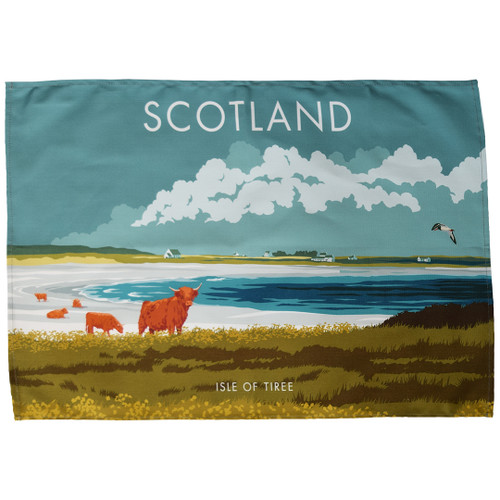Rivers are strange and mythical things. Ancient Romans believed that the god Volturnus controlled the rivers, and in Egypt the Nile was presided over by several divine figures. Even in British Folklore we have Old Father Thames. So it's no surprise to know that the Clyde is named after the local Celtic goddess Clota - a name which literally means 'the strongly flowing one'.
The second longest river in Scotland, the Clyde has always been an important trading route. And as traffic on the Clyde increased, so too did the need for lighthouses. Without them, ships would run aground or be wrecked on jagged rocks. That's why, in 1797, a lighthouse was built at Cloch Point on the coast of the Firth of Clyde, its light warning ships to steer clear of The Gantocks - a dangerous reef of rocks that jut out above the water, catching many captains unawares.
This stunning design shows the Queen Mary steaming past Cloch Point Lighthouse. Waves splash against the shore, seagulls circle overhead, and the lighthouse's black band shimmers in the sunlight - a beautiful scene to enjoy as you dry the dishes.
1 Review Hide Reviews Show Reviews
-
Cloch Lighthouse
Childhood memories. Excellent towel. Washes well.













